What Can You Plant in Your Garden to Attract Pollinators?
Once the snow is gone and the summer sun begins to warm things up, insect pollinators slowly stir from their long winter slumber… and they are famished! After fasting all winter, they are eager to set off and find nectar in our parks and gardens.
Looking to be part of all the springtime buzz? Read on to learn about some of the plants adored by bees, butterflies, and pollinators of all kinds! You can grow these in pots or directly in your garden. These plants are native to our climate here in Québec which means they can survive the winter. These kinds of plants are called perennials (which means they stick around year after year). They can be planted directly in the ground and will come back on their own every spring.
Red Columbine
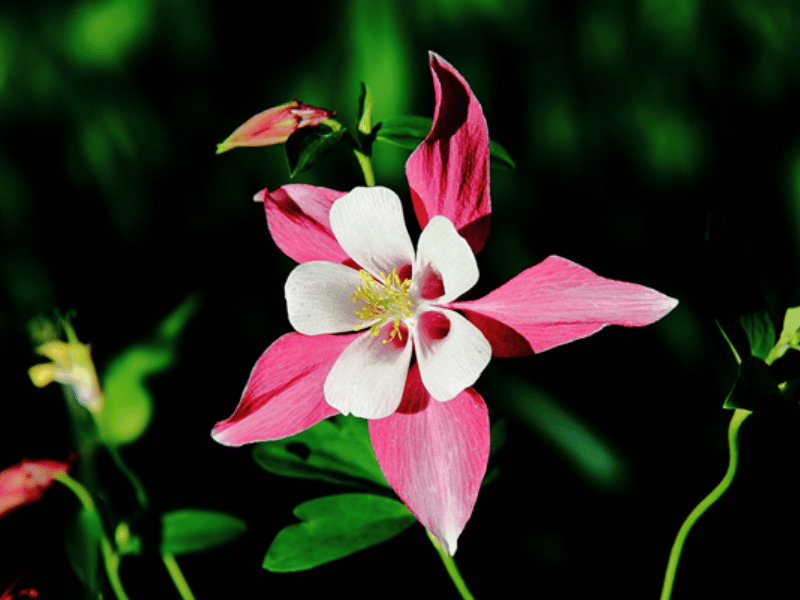
This magnificent plant with a fragile stem produces red, white, and yellow flowers from April to July. It can grow 30 to 60 cm in height and is happy to live in a pot. Though it normally likes shady areas and slightly rocky soils, red columbines are also happy to adapt to their environment. Their sweet nectar is a delicacy for bees and butterflies… as well as hummingbirds!
Milkweed
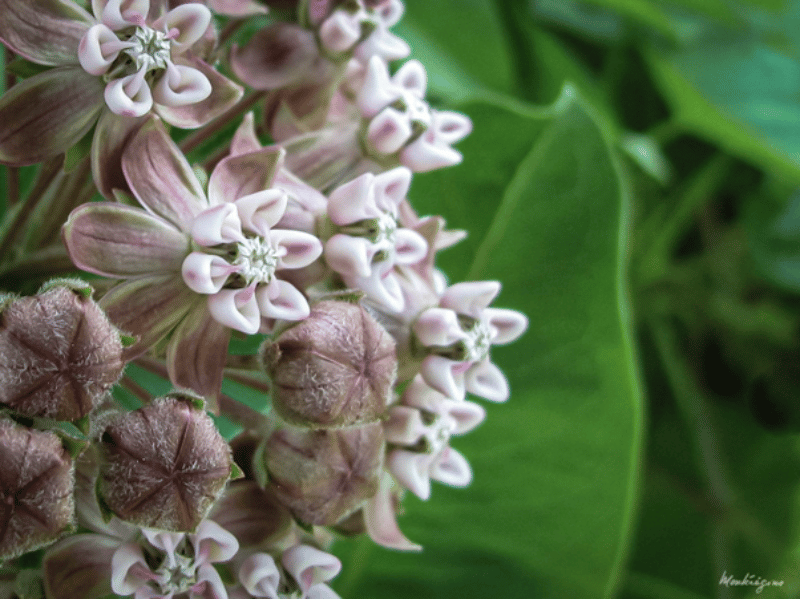
Appreciated by many insects, milkweed is best known for being the only plant on which Monarch butterflies lay their eggs. Monarch butterfly caterpillars will nibble on the plant’s leaves before making their chrysalis from which they emerge as adults and set off for their long journey south with those magnificent orange wings. As adults, Monarch butterflies will feed on milkweed nectar, but also feed on nectar from other flowers.
Two main species of milkweed can be found in Québec and both flower in July and August. Common milkweed is the one we find most everywhere, and it likes a lot of sun and well-drained soil. It will tolerate dry spells better than high humidity. It can grow up to —and sometimes even more than— one metre in height. Its flowers are light pink.
The other milkweed species is known as swamp milkweed and, as its name suggests, it prefers damp soil and is happy to grow in the sun or partial shade. It is smaller than common milkweed and can reach 40 to 60 cm in height. Its flowers are dark pink, almost red.
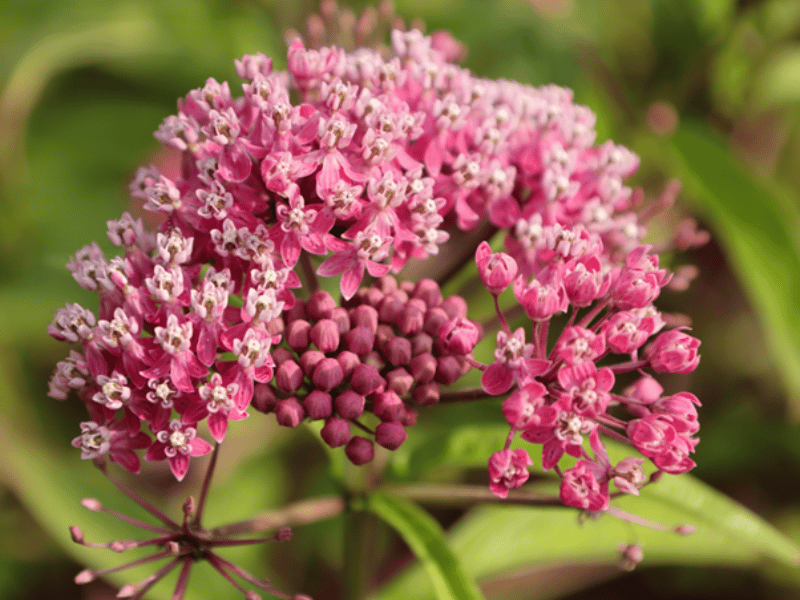
New England Aster
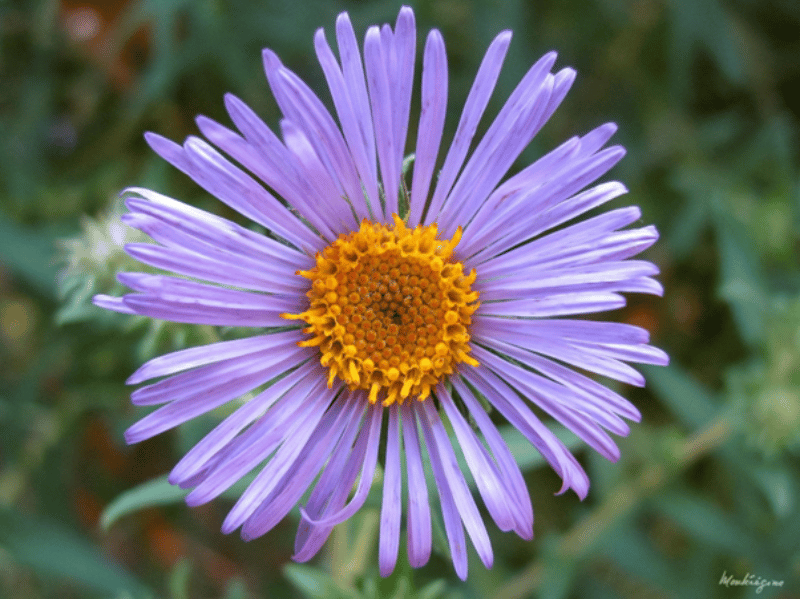
New England asters bloom from July until late fall, which offers pollinators a great source of food until the cold sets back in. Its purple flowers, whose stems can reach up to 150 cm in height, attract a number of insects and butterflies. Because it grows so tall, this plant sometimes needs a tutor, that is, a stake on which plants can lean for support. New England asters grow well in the sun or in partial shade, so long as the soil in which they are planted drains well (does not retain water for too long).
Cardinal Flower
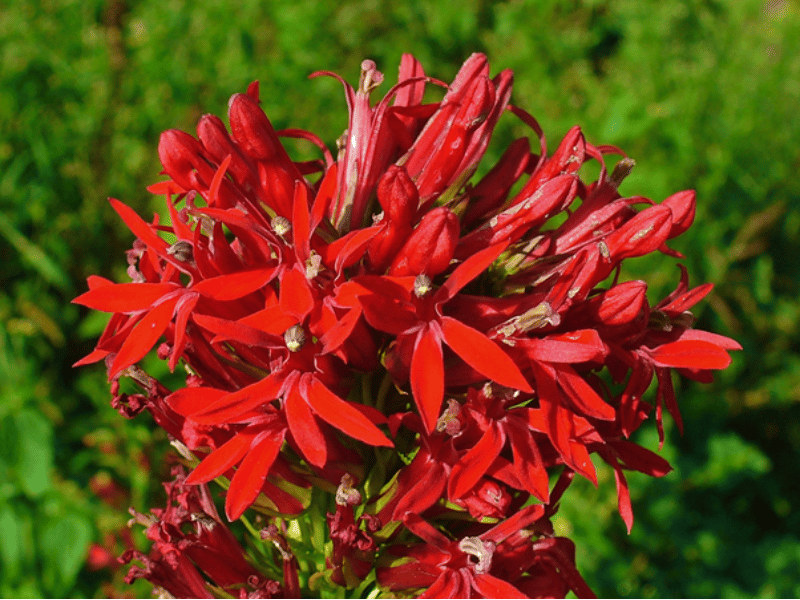
This drop-dead gorgeous plant produces stunningly bright red blooms from July until September and grows up to an average height of 50 cm (and sometimes even 120 cm!) This plant adores humid conditions and is often found along riverbanks. The way the flower’s labellum hangs down (often called a lip… and even looks a bit like one too) gives hummingbirds easy access to nectar. Large butterflies are also often attracted to cardinal flowers.
Seaside Goldenrod
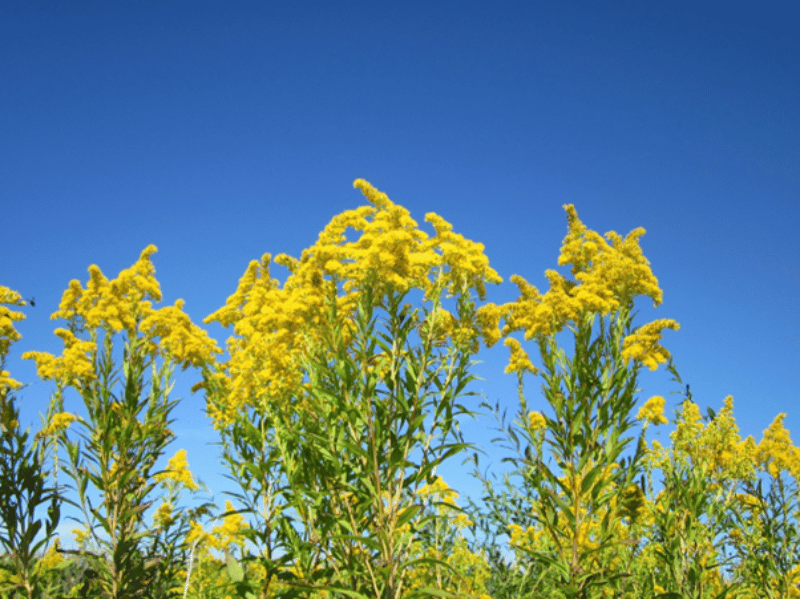
Seaside goldenrod shows off its yellow flowers from August until October. As its name might tell you, this plan is found in coastal areas, typically in salt marshes. That makes it particularly resistant to salty conditions, but it is also happy to grow in any regular garden! It adores the sun and prefers soil that drains well. Planting seaside goldenrod is a sure-fire way to attract bees, birds, and butterflies to your garden.
